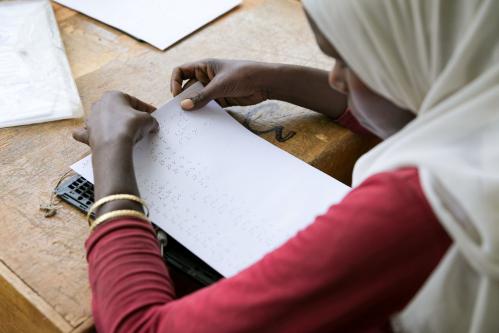Last month, Montgomery County heard from consultants it had paid $100,000 for a study of how its public schools teach math. The consultants reported wide and persistent gaps in achievement, with the county’s white and Asian students scoring significantly higher than its African American and Hispanic students. The culprit, they reported, was tracking, the practice of grouping students into different classes based on ability or prior achievement. When high-performing and low-performing students study different math curriculums, the consultants said, low-performing students suffer from diminished expectations and an impoverished learning environment. They recommended that tracking be abolished.
Unfortunately, the report wove two truths into a fiction.
The first truth is that tracking can be used unfairly. There is a sad history of educators steering students of color into nonacademic course work. The second truth is that significant gaps in achievement exist among students of different races, ethnicities and income groups—not only in Montgomery County, but across the nation. The fiction comes in concluding that tracking has caused these gaps.
The consultants provided no evidence that putting everyone in the same classes will close the achievement gaps but nevertheless recommended abolishing the high schools’ three-track system, which includes advanced placement classes for seniors. But they didn’t investigate whether students who struggle with arithmetic will benefit from taking classes in higher math. They also didn’t ask whether students ready for calculus are held back by being in the same classroom with students learning fractions. And they didn’t see whether the race gap has narrowed in neighboring jurisdictions that claim to have reduced tracking.
Would getting rid of tracking help? It’s doubtful. The best research has found that tracking has no significant effect on achievement. As James A. Kulik of the University of Michigan has demonstrated, the best results come when curriculum is tailored to different levels, targeting the academic deficiencies of low-performing students and allowing high performers to accelerate to a level at which they’re challenged.
So how do we get more minorities into upper-level courses and close the achievement gap? Better preparation in the lower grades is key.
David Klein recently wrote a paper [in pdf format] for the Brookings Institution that described Kelso Elementary School in California, in which 44 percent of the students are African American, and 53 percent are Latino. One-third aren’t fluent in English, and 89 percent qualify for free or reduced lunch.
Children enter Kelso with very low scores, yet the school’s math scores are the envy of schools in more privileged settings. Earlier this year, its fifth-graders scored at the 73rd percentile in math on the Stanford Achievement Test, meaning that they perform in the top 30 percent of students in the nation. Third-graders did even better, scoring at the 83rd percentile.
How did they do it? By studying a traditional curriculum that emphasizes fundamental math; by teachers directly instructing children, not relying on cooperative groups; by limiting the use of calculators until students have mastered basic arithmetic; and by relentlessly pushing children to learn more and reach higher.
This is the opposite of what the consultants urge for Montgomery County. Their report concludes that, in addition to tracking, “an exaggerated emphasis on acceleration rather than enrichment places African American and Hispanic students at extreme disadvantage.” The “enrichment” they describe embraces the worst cliches of the math reform movement.
Montgomery County officials should chalk up the $100,000 they spent as a loss and reject the consultants’ advice in favor of working with teachers and parents on the tough business of improving their math program.
The Brookings Institution is committed to quality, independence, and impact.
We are supported by a diverse array of funders. In line with our values and policies, each Brookings publication represents the sole views of its author(s).



Commentary
Op-edSearching for a Way to Close the Achievement Gap
October 22, 2000